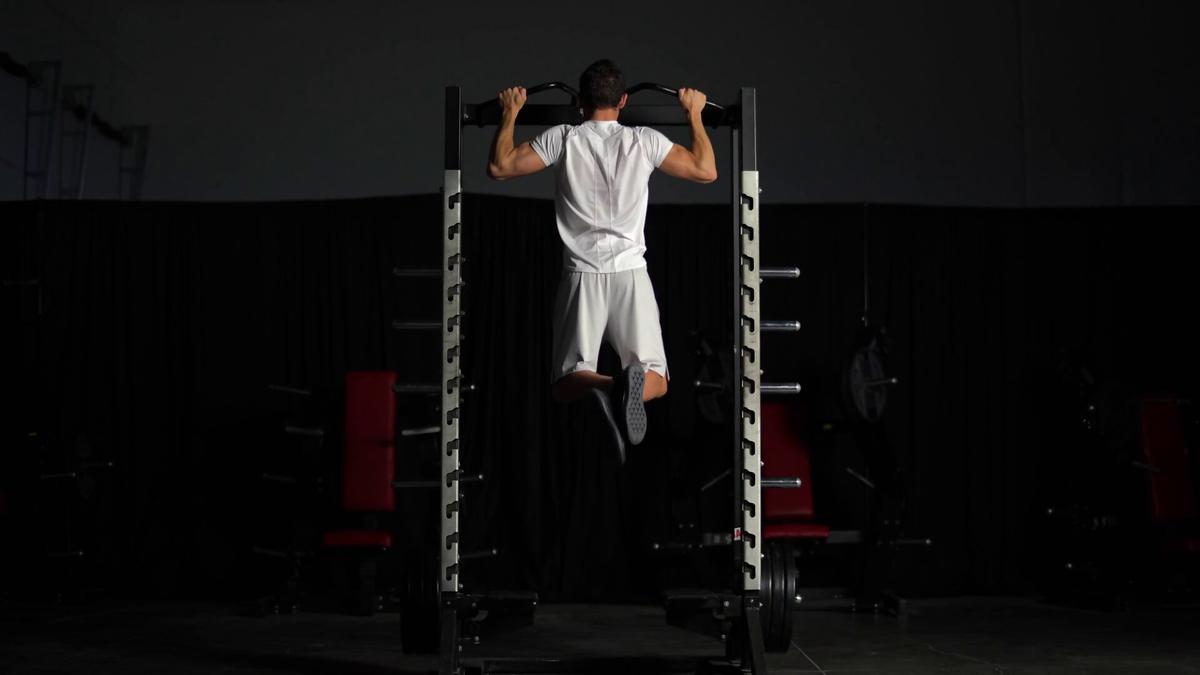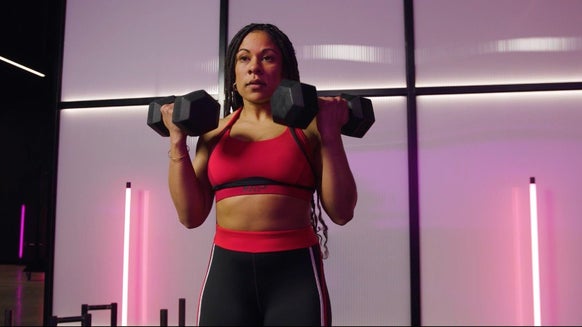Pull-Up Guide And Progression Plan

The pull-up is one of the original and most difficult bodyweight exercises to perform, even seasoned gym-goers can struggle to complete high numbers of reps.
Pull-ups are an upper-body, compound exercise that will activate a number of muscles in your back, shoulders, and arms at the same time, including the latissimus dorsi (lats) and biceps. They're a great way to increase your pulling strength, which will assist you with other lifts involving the lats. That’s not to mention the grip strength improvements you’ll see over time.
The movement, in theory, is simple, just pull yourself up to the bar and lower yourself back down. But, it's not as easy as it sounds. If you’re struggling to perform a pull-up or a set of pull-ups, then don’t worry. This article will take you through a step by step guide to finally master those pull-ups.
Progression plan
Dead Hang
Hang in there: In order to become a master at pull-ups, you’ll first need to work on your grip strength. One of the toughest parts of pull-ups comes from being able to keep your body hanging from the bar throughout the entire movement.
- Practice holding yourself on the bar for 5-10 seconds at a time or until you get fatigued. Once you build up this practice, you will be able to increase the number of sets you do, as well as the time you're able to hang.
- Now try to hang from the bar for as long as you can. Not just until you feel tired, but until you physically can’t hold on any longer. Take 60-90 seconds rest and repeat. After a few weeks, try to shorten the rest period.
- Don't forget to try different types of grip while hanging from the bar. The wide grip is great but also try narrow and underhand hangs as you build your strength.
Assisted pull-ups
Machine-assisted
This is a great exercise if you’re struggling with the pull-up as a bodyweight exercise, most gyms have them and you can also choose the resistance weight to make it easier or harder as you improve. As you get stronger you can start to remove the resistance try to hit double figures on a low resistance before moving on.
https://youtu.be/HqCIvm5l9IA
Resistance bands
Another option would be resistance band pull-ups, which makes it easier to pull yourself up.
Place the band over the bar, with your feet inside at the other end, and use the tension of the band to help in the movement. This replicates the machine to a certain extent and provides you with assistance with the pulling phase of the pull-up.
https://youtu.be/aHMStc-JOUg
Static elevated hold
Now we are getting to the harder stuff, it sounds simple in theory and will be over time but don’t worry if you struggle at first.
The static hold is simply keeping yourself elevated in the pull-up position (at the top) for as long as you can. Use a step or a bench and jump up into the top position with your arms shoulder-width apart. The hold should replicate the same position as you has when using the assisted machine, keep this hold for as long as you can and try to improve it by a couple of seconds each time.
Let's try the static hold for just 5 seconds first, then we can work on reaching and surpassing 10!
Negative pull-up
Negative pull-ups help to increase grip and overall strength, which can benefit your regular pull-ups. It involves performing only the lowering, or eccentric, phase of the exercise.
https://youtu.be/zjLQXH30yUc
1. Start off by standing on a box or bench. Reach for the bar or jump up and take a shoulder-width grip.
2. Once you have gripped the bar, lower yourself down as slowly as you can, stretch out your lats and keep your core tight.
3. Once you reach the bottom, step back onto the box or bench and reach up again, repeating the movement.
Chin-ups
Similar to pull-ups, chin-ups utilise more of your biceps muscles to help you complete the movement.
https://youtu.be/XlYI7Qcv4-M
1. Using a supinated grip (palms facing towards you) with your arms shoulder-width apart, hang from the bar in the starting position.
2. Then proceed to pull yourself up to the top of the bar, pausing for a moment, and then lower yourself back down.
Now that you are actually performing a full movement, there are a few tips you should keep in mind:
- Ensure that you pull your shoulder blades back, retracting them, as you complete the movement.
- Imagine you are pulling the bar down, rather than yourself up.
- Keep your abs tight and glutes tensed for increased stability.
- Try to get your chin above the bar; don’t stretch your neck in order to achieve this.
- Once you are able to complete 3-4 sets of 8-10 reps of chin-ups, you can move on to the notorious pull-up…
The pull-up
https://youtu.be/Frn-CBdTWJo
1. Take a firm grip of the bar with your palms away from you or down.
2. Take a slightly wider than shoulder-width grip and hang down with your arms extended. If your feet and still touching the ground cross then over behind you.
3. Keep a tight core, as you don’t want to start swinging, around under the bar, and retract your shoulder blades together.
4. Now you're ready to for the hard part, drive your elbows down towards the ground and your upper chest towards the bar. This is normally the part where people start to swing or use momentum so make sure your core is tight and keep you stable.
5. Once you are at the top, chin above the bar and level with your chest start to lower yourself nice and slow towards your starting position.
Take home message
The pull-up is a great bodyweight exercise, but one of the most difficult, so it might take time to master. However, sticking to the plan you'll certainly achieve this sooner rather than later.
Take your time with this and if you struggle revert to the assisted method, once you build your strength up and feel comfortable you can take up the bodyweight pull-up. Don’t forget pull-ups are one of the hardest exercises in the gym so stay patient and build yourself up gradually.

Dan Speakman is our editor and level 3 qualified Personal Trainer. Having spent time in Australia, he has experience in planning and delivering exercise plans to beginners and advanced athletes — both in the UK and down under.
Dan has also run successful weight-loss camps across the UK, alongside regular training seminars, covering all areas of gym-based training. He also runs weekly fitness boot camps and spin classes.
When he’s not working, or in the gym, Dan enjoys travelling to sunnier destinations, eating out, and trying exciting new foods.



